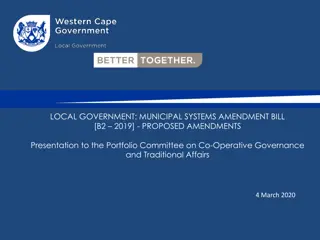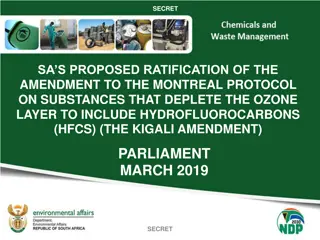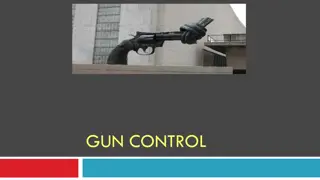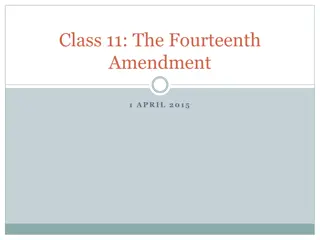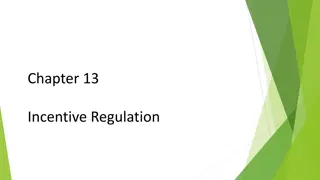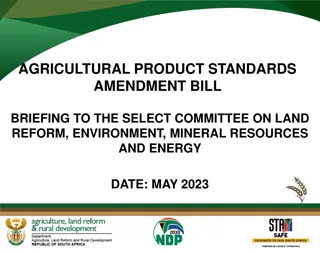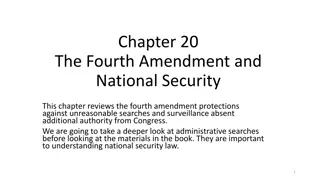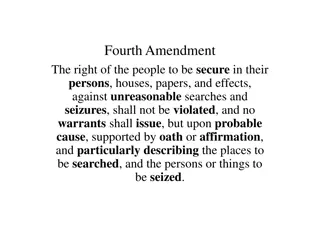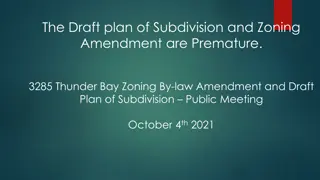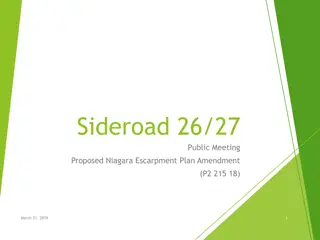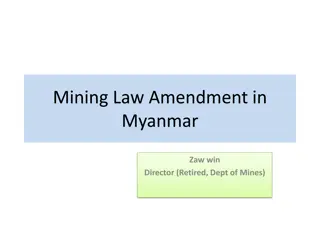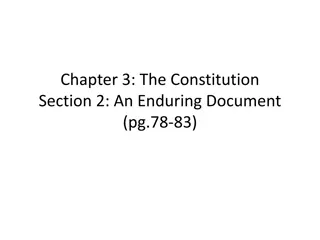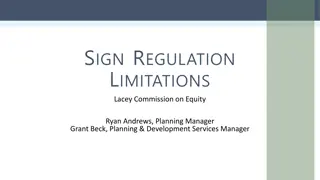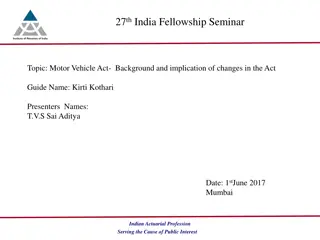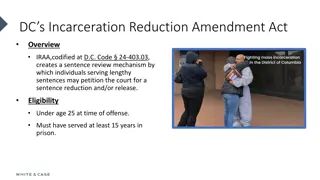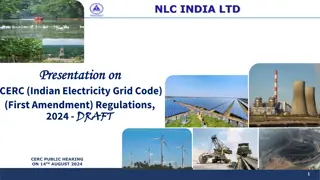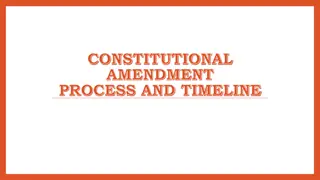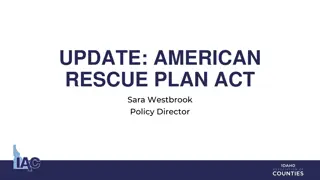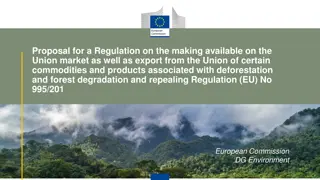Limitations on Government Regulation of Demonstrations Under the First Amendment
Explore the First Amendment's restrictions on government regulations for demonstrations, encompassing traditional, designated, and limited public forums. Learn about the criteria required to enforce content-based exclusions and the necessity of regulations to serve compelling state interests within these forums.
Download Presentation

Please find below an Image/Link to download the presentation.
The content on the website is provided AS IS for your information and personal use only. It may not be sold, licensed, or shared on other websites without obtaining consent from the author.If you encounter any issues during the download, it is possible that the publisher has removed the file from their server.
You are allowed to download the files provided on this website for personal or commercial use, subject to the condition that they are used lawfully. All files are the property of their respective owners.
The content on the website is provided AS IS for your information and personal use only. It may not be sold, licensed, or shared on other websites without obtaining consent from the author.
E N D
Presentation Transcript
First Amendment Limitations on a Government s Ability to Regulate Demonstrations Tom Carr Boulder, Colorado City Attorney
Purpose of this Webinar To provide the practitioner with a better understanding of a government s ability to regulate demonstrations within the limitations imposed by the first amendment.
The First Amendment Congress shall make no law respecting an establishment of religion, or prohibiting the free exercise thereof; or abridging the freedom of speech, or of the press; or the right of the people peaceably to assemble, and to petition the Government for a redress of grievances.
The Third Amendment No Soldier shall, in time of peace be quartered in any house, without the consent of the Owner, nor in time of war, but in a manner to be prescribed by law.
Fora Traditional Public Forum Limited Public Forum Designated Public Forum Non-public Forum
Traditional Public Forum May not prohibit all communicative activity. To enforce a content-based exclusion it must show that its regulation is necessary to serve a compelling state interest and that it is narrowly drawn to achieve that end. Regulations of the time, place, and manner of expression which are content-neutral, are narrowly tailored to serve a significant government interest, and leave open ample alternative channels of communication. Perry Educ. Ass'n v. Perry Local Educators' Ass'n, 460 U.S. 37, 45, 103 S. Ct. 948, 955, 74 L. Ed. 2d 794 (1983)
Designated Public Forum Although a state is not required to indefinitely retain the open character of the facility, as long as it does so it is bound by the same standards as apply in a traditional public forum. Reasonable time, place and manner regulations are permissible, and a content-based prohibition must be narrowly drawn to effectuate a compelling state interest. Perry Educ. Ass'n v. Perry Local Educators' Ass'n, 460 U.S. 37, 46 (1983)
Limited Public Forum May not exclude speech in a manner that is not reasonable in light of the purpose served by the forum. May not discriminate against speech on the basis of its viewpoint. Content discrimination is permissible if it preserves the purposes of that limited forum. Viewpoint discrimination is impermissible when directed against speech otherwise within the forum's limitations. Rosenberger v. Rector & Visitors of Univ. of Virginia, 515 U.S. 819, 829 30 (1995)
Nonpublic Forum Limitations on a nonpublic forum can be based on subject matter and speaker identity so long as the distinctions drawn are reasonable in light of the purpose served by the forum and are viewpoint neutral. Cornelius v. NAACP Legal Def. & Educ. Fund, Inc., 473 U.S. 788, 806 (1985)
Thomas v. Chicago Park District, 534 U.S. 316 (2002) Facial challenge to an ordinance requiring permits to conduct a public assembly, parade, picnic, or other event for more than 50 people. Applications processed in order of receipt. Denial only based on 13 specified grounds. Denial must be in writing stating reason and if feasible providing means to cure.
If a denial is based on prior receipt of a competing application, the district must suggest alternate times or places. Unsuccessful applicant can appeal to the park superintendent within seven days, who must act within seven days. If affirmed the applicant can seek judicial review. Petitioners had sought permits to demonstrate in favor of marijuana legalization some granted, some denied.
Key Factors in the Holding The ordinance was not limited to expressive activity. Purpose of the permit system is coordinate multiple uses of limited space, to preserve park facilities, to prevent uses that are dangerous, unlawful, or impermissible and to assure financial accountability for damage caused by the event. Ordinance provides narrowly drawn specific limitations, which constrain official discretion.
McCullen v. Coakley, 134 S. Ct. 2518 (2014) Massachusetts law prohibited standing on streets or sidewalks within 35 feet of abortion clinics. Exempted People using the clinic Employees entering or leaving Emergency personnel Passerbys
The petitioners were sidewalk counselors. Approached women entering the facility: Good morning, may I give you my literature? Is there anything I can do for you? I'm available if you have any questions. Petitioners consider it essential to maintain a caring demeanor, a calm tone of voice, and direct eye contact during these exchanges. The Boston clinic used employee escorts.
Restrictions were not content-based. Exemption for employees was not viewpoint-based. Law substantially burdened the petitioners speech. The law was not narrowly-tailored. There are many less-intrusive alternatives to the 35 foot buffer.
Citizens for Peace in Space v. City of Colorado Springs, 477 F.3d 1212, 1220 (10th Cir. 2007) Challenge to security plan for meeting of NATO ministers. Complete exclusion zone around the Broadmoor. Checkpoint was 310 yards from the hotel. Challenged as not sufficiently narrowly tailored. The court held that the restriction was tied closely to the prevention of terrorism.
Board of Airport Comm'rs v. Jews for Jesus, Inc, 482 U.S. 569 (1987) LAX adopted a rule banning all first amendment activity in the main terminal. The prohibition included activity that did not impair the government interest in preventing congestion. Would have been prohibited in a nonpublic forum.
Packingham v. North Carolina, 137 S. Ct. 1730 (2017) Challenge to a law that prohibited registered sex offenders from using social media. Content neutral - Intermediate scrutiny A law must be narrowly tailored to serve a significant governmental interest. The law must not burden substantially more speech than is necessary to further the government's legitimate interests.
There is an important government interest in protecting children from sexual abuse. Prohibiting the use of social networks prohibits a broad scope of protected activity. Not sufficiently narrowly tailored to be upheld.
Reed v. Town of Gilbert, 135 S. Ct. 2218 (2015) Gilbert s sign code regulated temporary signs and had exemptions for political signs. The petitioner s church used temporary signs to provide information about the location of services. Court held that regulation was content-based, because a person needed to read the sign to determine whether the regulation applied.
Fleming v. Jefferson Cty. Sch. Dist., 298 F.3d 918, 923 (10th Cir. 2002) Challenge to restrictions on content of tiles to be placed on the walls at Columbine High School. School district had adopted content-restrictive guidelines. Plaintiffs wanted to include religious messages. The tiles were government speech and therefore the district could regulate content.
Seattle Affiliate, v. City of Seattle, 550 F.3d 788 (9th Cir. 2008) Demonstration against police brutality. Seattle Parade Ordinance gave the police chief discretion to alter the route in the interest of pedestrian and traffic safety. In 2002, the permit issued required the marchers to use the sidewalks and obey traffic laws if there were fewer than 200 marchers. In 2003, there was no such language. Only 80 to 100 people participated. An officer directed them to use the sidewalk.
Testimony at trial showed that there were no set guidelines for what constituted risk to pedestrian or traffic safety. One officer testified that it would be appropriate to move a march if it was going to inconvenience patrons at sidewalk cafes. Court held that the parade ordinance was unconstitutional.
Berger v. City of Seattle, 569 F.3d 1029 (9th Cir. 2009)(en banc) Balloon guy was a jerk. City drafted policy requiting permits for vendors and performers at Seattle Center. Rule requiring permits was not sufficiently narrowly tailored. Park users were not captive ordinance. Rule prohibiting active solicitation was content-based.
Sanders v. City of Seattle, 156 P.3d 874 (Wash. 2007) Challenge to shopping center rule that persons carrying signs through shopping center on city easement. Court held that it was a nonpublic forum, restriction was content neutral and not a prior restraint.
City of Charlottesville changed the name of Lee park to Emancipation Park and planned to remove a statue of Robert E. Lee. Jason Kessler applied for and received a permit to hold a demonstration in Emancipation Park. Emancipation Park is only one block square. In the following weeks the city granted permits to groups of counter-protestors at other parks.
Emancipation Park McIntire Park
A week before the demonstration, the city revoked Kessler s permit and issued one for a protest at McIntire Park. McIntire Park is over a mile away from Emancipation Park, but is over 100 acres. Kessler sought a preliminary injunction. Court granted the injunction. Decision to revoke only Kessler s permit was content-based.
In revoking the permit, the defendants cited safety concerns associated with the number of people expected to attend Kessler's rally However, the defendants cited no source for those concerns and provided no explanation for why the concerns only resulted in adverse action being taken on Kessler s permit. Kessler v. City of Charlottesville, Slip. Op. No. 3:17CV00056 (Aug. 11, 2017).
Takeaways Take a look at special event and parade ordinances Are there specific criteria for denial Is there a process for review Anything that could be considered content based? Anything that could be considered viewpoint based?
Demonstrations Clearly articulate government interest in regulating or restricting. Tie interest closely to restriction. Use Charlottesville as justification. Look to land use any chance that the area is not a public forum. Review your rules for public spaces. Do you have an enforcement mechanism?
Signs, Graffiti, Projections Are they banned where you want them banned? Are your rules enforced consistently? Do you have an enforcement mechanism?
City Council Meetings Review your rules Do you have the ability to restrict disruptive activity? Do you have a plan to make an arrest? Council members should not be involved in the decision to make an arrest. Do you have a reasonable sign restriction? Work with your presiding officer on how to handle demonstrations.


![RE: ELECTORAL MATTERS AMENDMENT BILL [ B42-2023]](/thumb/18837/re-electoral-matters-amendment-bill-b42-2023.jpg)
